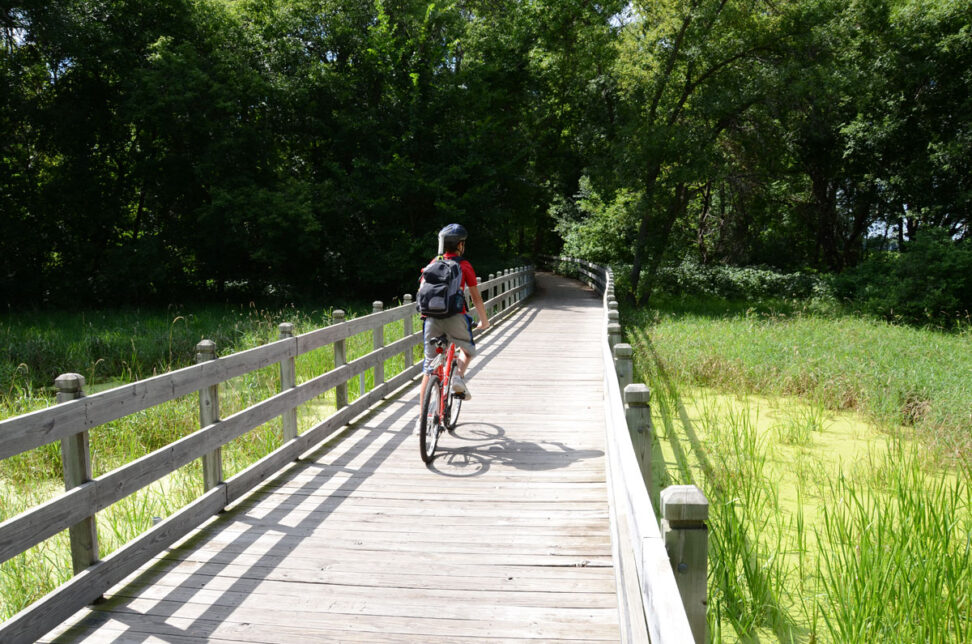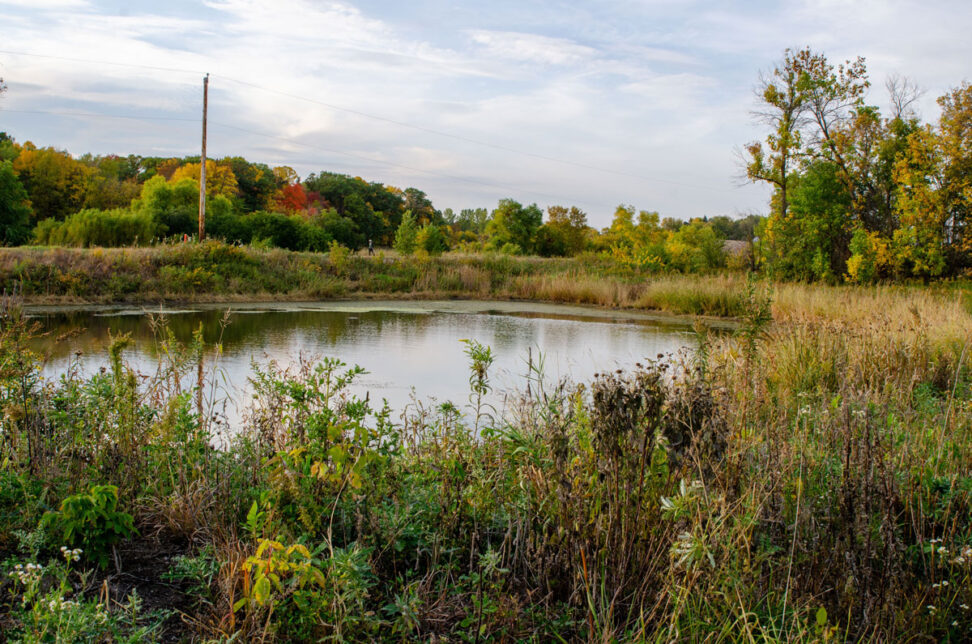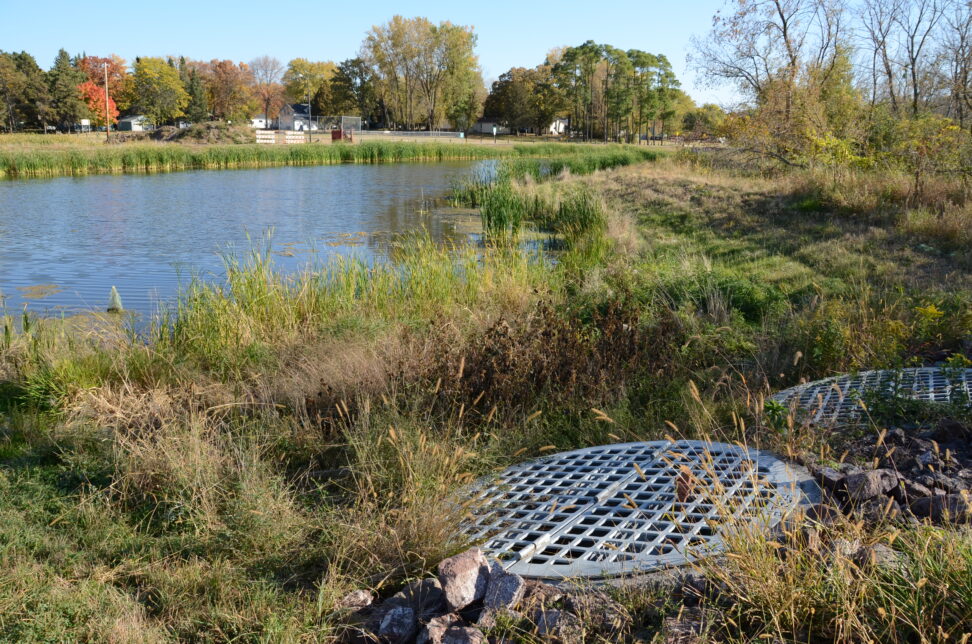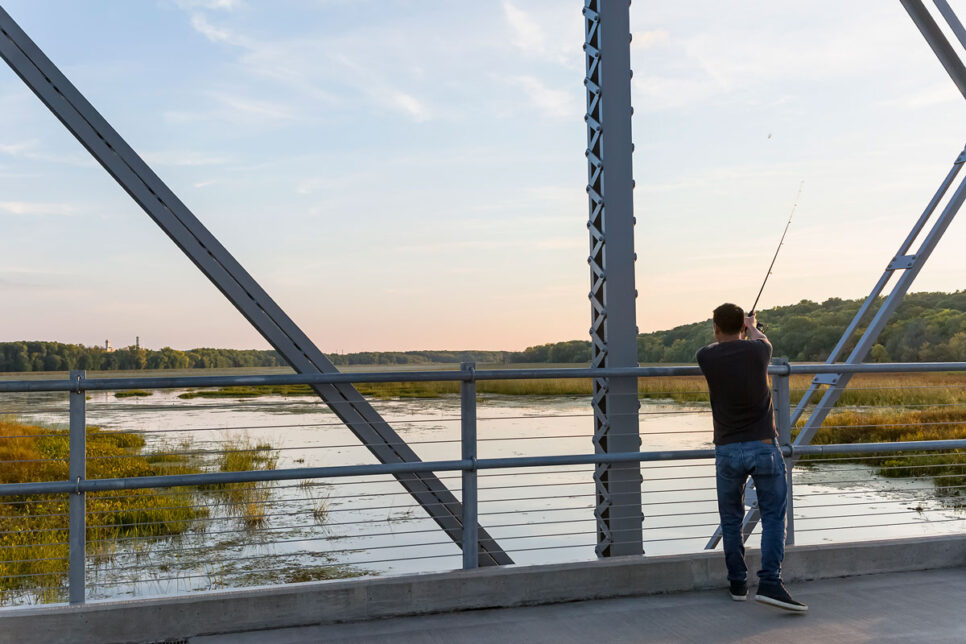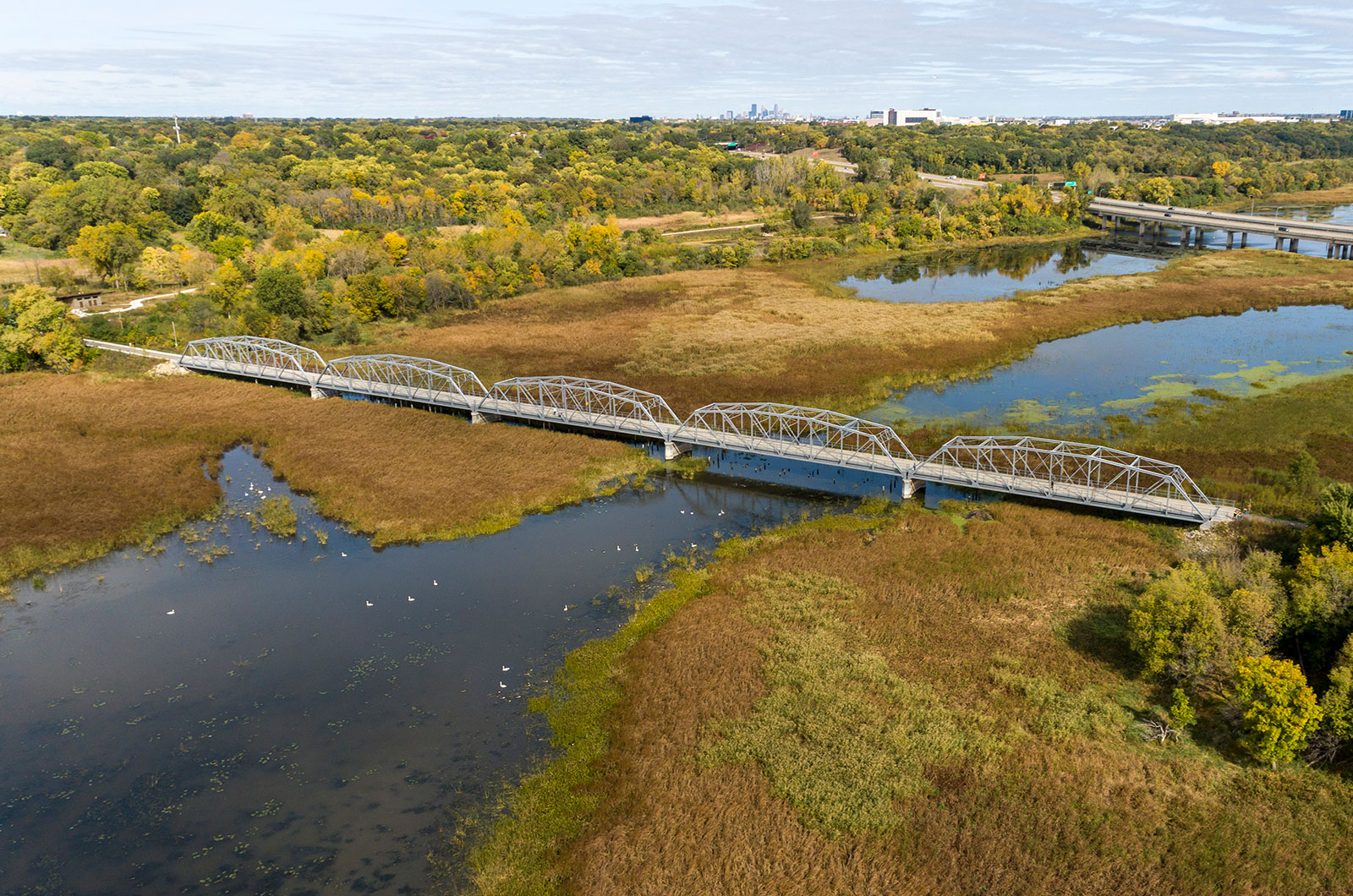In honor of World Wetlands Day, we asked three of our water resources engineers and an environmental planner to weigh in on why wetlands are important and how their work impacts wetland maintenance and preservation. While each contributor offered a unique perspective based on their own background and experience, Emilee Friesen, Claire Matrisciano, Delaney Moberly, and Derek Tollette are all adamant that protecting wetlands is vital to the well-being of our ecosystems.

What is a wetland? Generally, the US Army Corp of Engineers (USACE) describes wetlands as “transitional areas between open water and dry land and are often found along bays, lakes, rivers, and streams.” Technically, the USACE defines wetlands as “areas that are inundated or saturated by surface or groundwater at a frequency and duration sufficient to support… a prevalence of vegetation typically adapted for life in saturated soil conditions.”
Wetlands once plentiful across the state of Minnesota have now been estimated to have dropped 90% throughout the past few hundred years due to the development of farms and cities. Derek Tollette, a certified wetland professional, summarized the necessary steps currently in place to protect what remains,

“Wetlands are identified and mapped, planners and engineers work with project designers to minimize impacts on existing wetlands and, if unavoidable, offer mitigation assistance to clients so total wetland areas are not lost due to development and construction. Some states have a “no net loss” policy for wetlands, meaning any wetland that is impacted is required to be mitigated.”
Derek Tollette, SRF Environmental Planner
SRF water resources engineer Claire Matrisciano also provided some perspective on the steps engineers must take during a project take to ensure no to minimal impact on these ecosystems,

“With every project, we need to consider the locations of wetlands for construction on sites near them; we place buffer zones around wetlands so there cannot be construction activity within a certain range of the wetland to ensure they are being preserved.”
Claire Matrisciano, SRF Water Resources Engineer
Wetlands are carefully protected because of both their impact on the environment and our modern infrastructure. Wetlands are essential for removing excess nutrients, sediments, and pollutants from run-off. These ecosystems can act as a filter through both the plants specific to wetlands as well as the soil and ground itself working as a water purification system to prevent pollutants from reaching downstream areas. Wetlands are also necessary for stormwater management. Whenever an event like rain or snow melting occurs, wetlands will store excess water and then release it slowly, reducing the risk of flooding and erosion. Wetlands are also one of the most diverse biological ecosystems on the planet due to their unique wet makeup, creating the ideal habitat for certain aquatic and terrestrial species.
Protecting wetlands is important to SRF, and our team works hard to prevent or minimize our impact on these vital areas. Through completing the wetland delineation fieldwork to establish the size and location of wetlands and enhancing or creating additional wetlands when it is then determined that impacts would be unavoidable. Emilee Friesen, a water resources engineer, shares her enthusiasm for wetlands,

“Wetlands are incredibly beautiful systems of water, land, and energy. To preserve the life that a wetland supports, it’s essential for water resources engineers to carefully analyze any potential changes wetlands may undergo as a result of a project. The best situations allow us to enhance the quality of a wetland and bring more attention to the wonderful work it does.”
Emilee Friesen, SRF Water Resources Engineer
While there are presently resources and processes in place to protect wetlands, it is important to continue learning about these essential ecosystems, and how we can protect and improve them. The formation of SRF’s EcoTeam was a critical step to actively continuing to pursue environmentally sound solutions. By teaming up under one goal to protect our planet, individuals from our water resources, landscape architecture, environmental planning, and traffic and technologies groups work together to learn and develop environmentally sound solutions to the problems we are trying to solve. Delaney Moberly, a water resource engineer on the EcoTeam, recalls one project that involved thinking outside the box in pursuit of keeping our planet clean,

“During the Gold Line project, a large treatment volume area was needed to compensate for the increased amount of impervious we would be adding in, but we struggled to find the space in Saint Paul for a large basin or pond. We then found one space with a large open site, but as we dug into the site’s history, it was uncovered to be an old dump with large amounts of contamination. Yet, we still needed a large area for the drainage that would need to be treated. So, we collaborated with regulators on a solution to dig out a portion of the contaminants and then add a layer of clay to the floor. Sealing off what contamination remained and preventing water from being sent into the contamination while using a large open area that would not be used for anything else.”
Delaney Moberly, PE, Water Resource Design Lead
In honor of World Wetlands Day, SRF recognizes the critical need for wetlands and all other natural ecosystems and the diversity of wildlife they support. We strive to protect the environment and raise awareness of the roles wetlands play on our planet so others can understand their importance and support them as well.
Want to learn more about wetlands and how to you can help conserve them? https://www.worldwetlandsday.org/
Interested in working on the EcoTeam? Or as a water resources engineer who works with wetlands? Check out our careers’ page.
